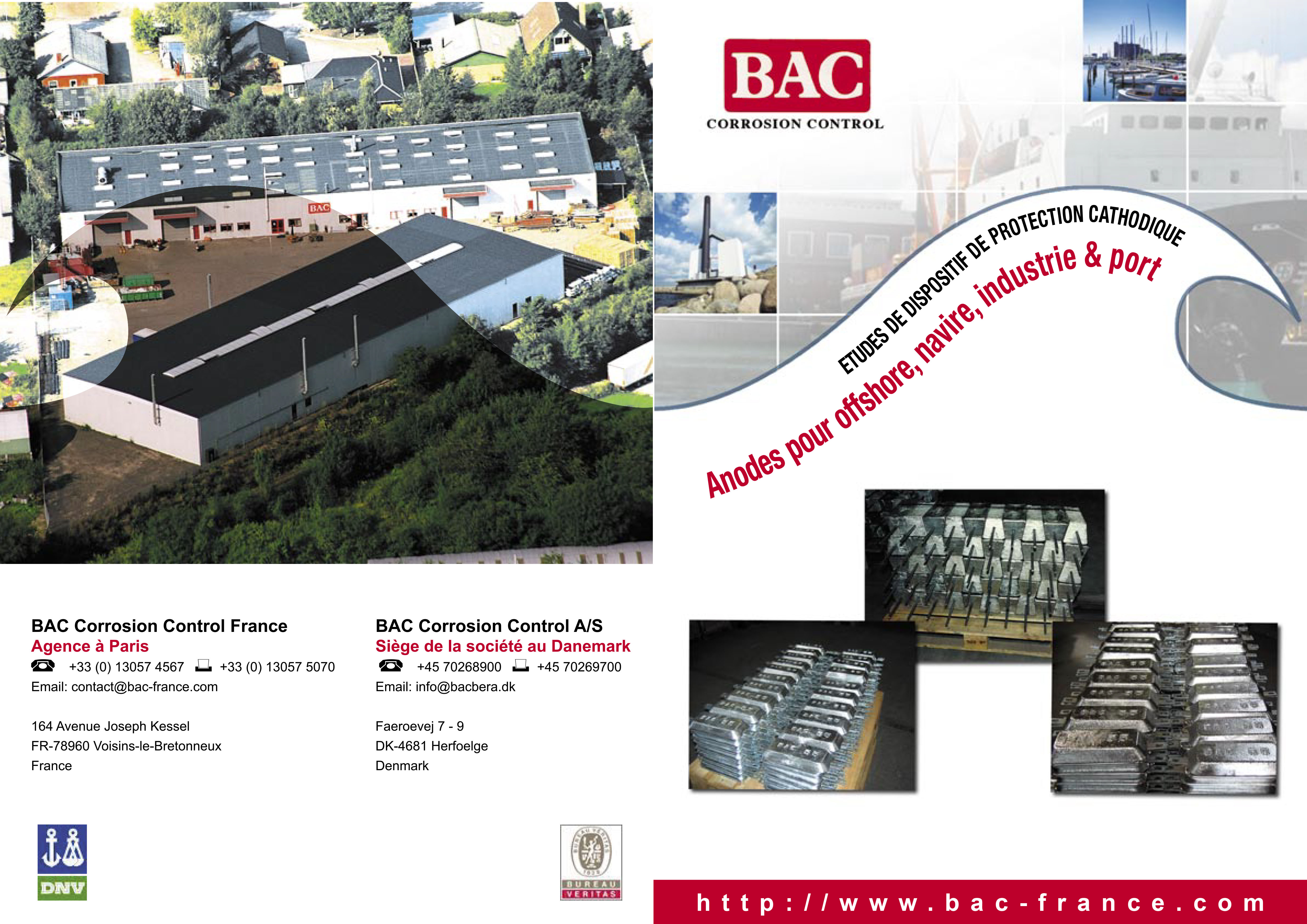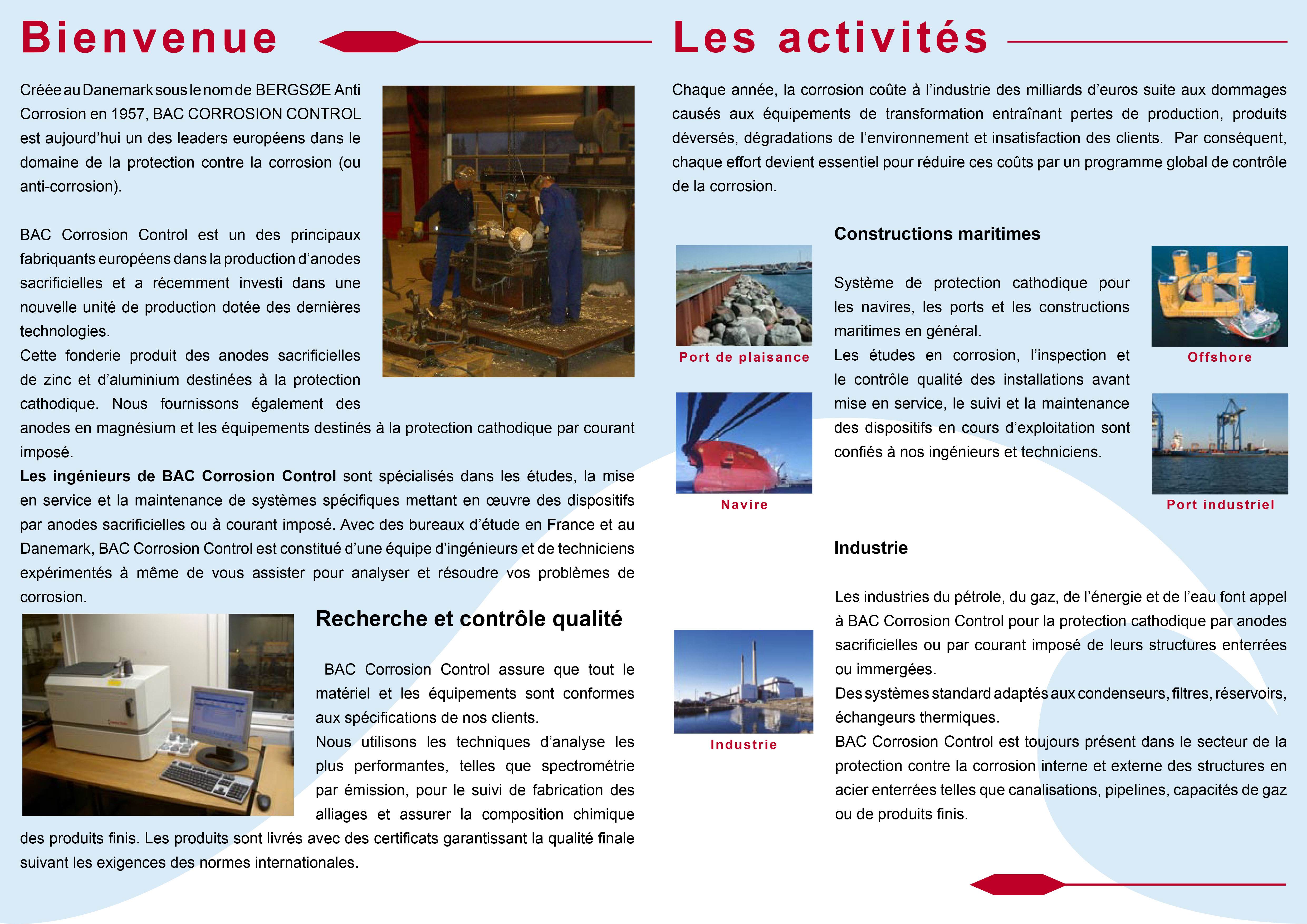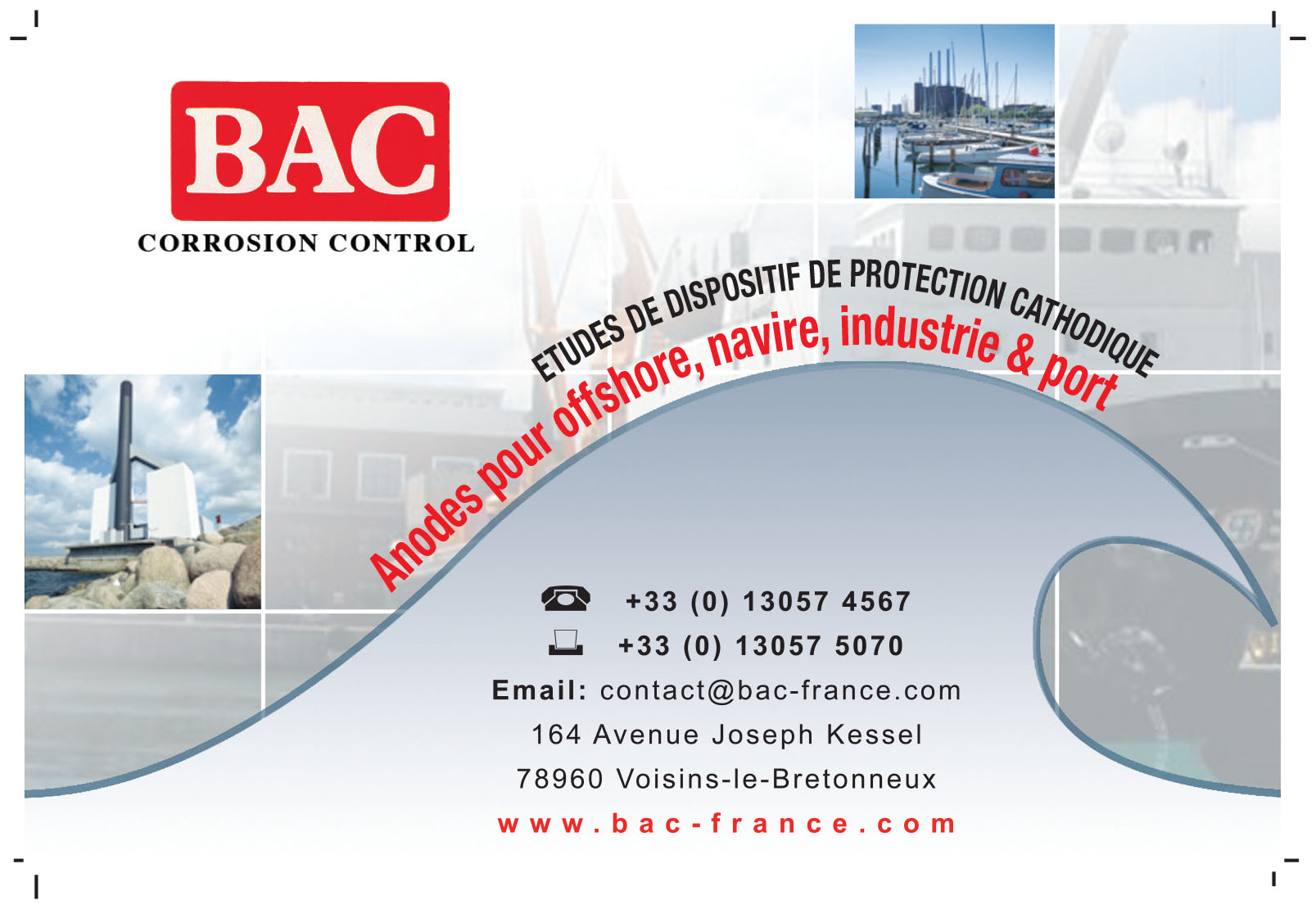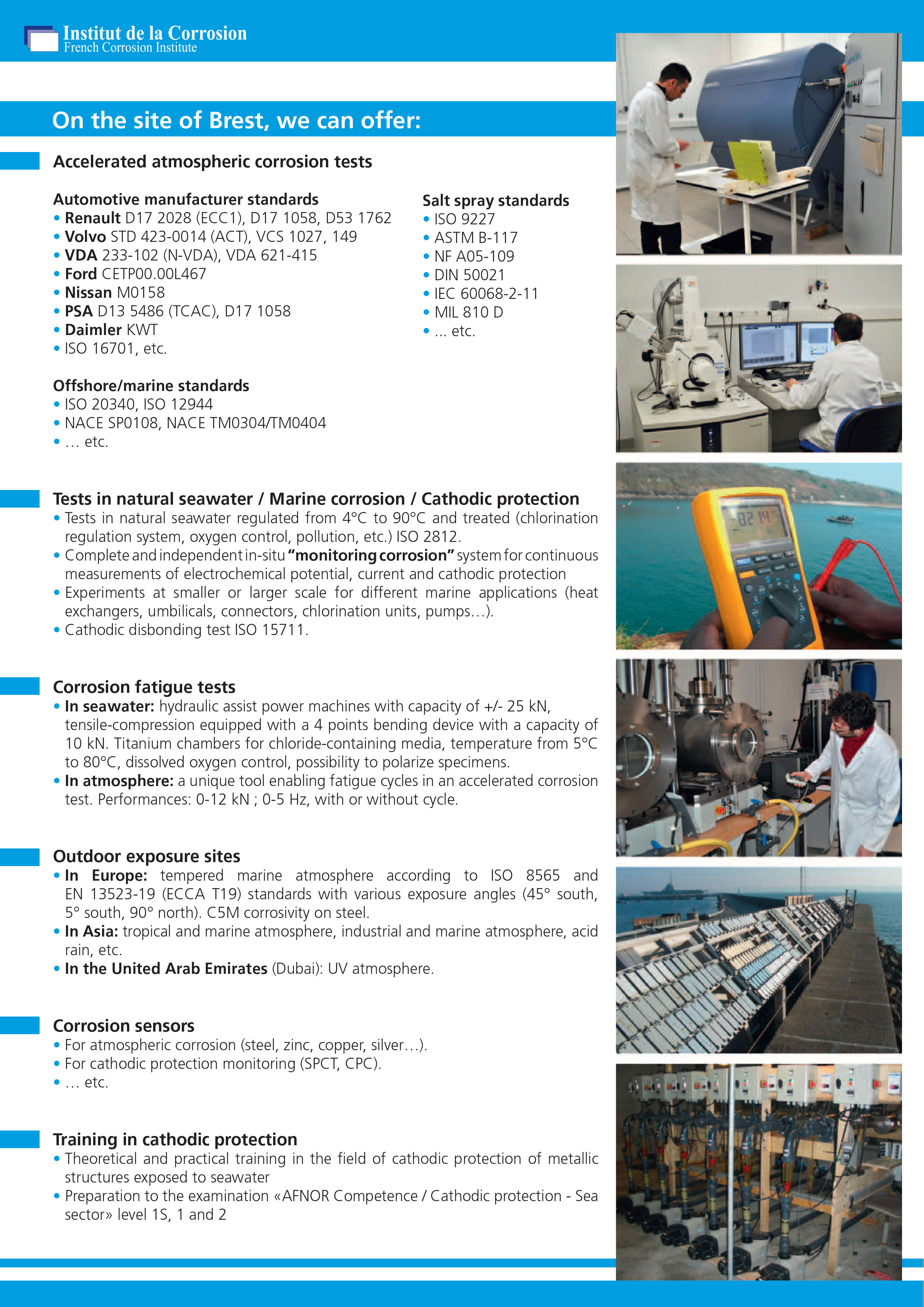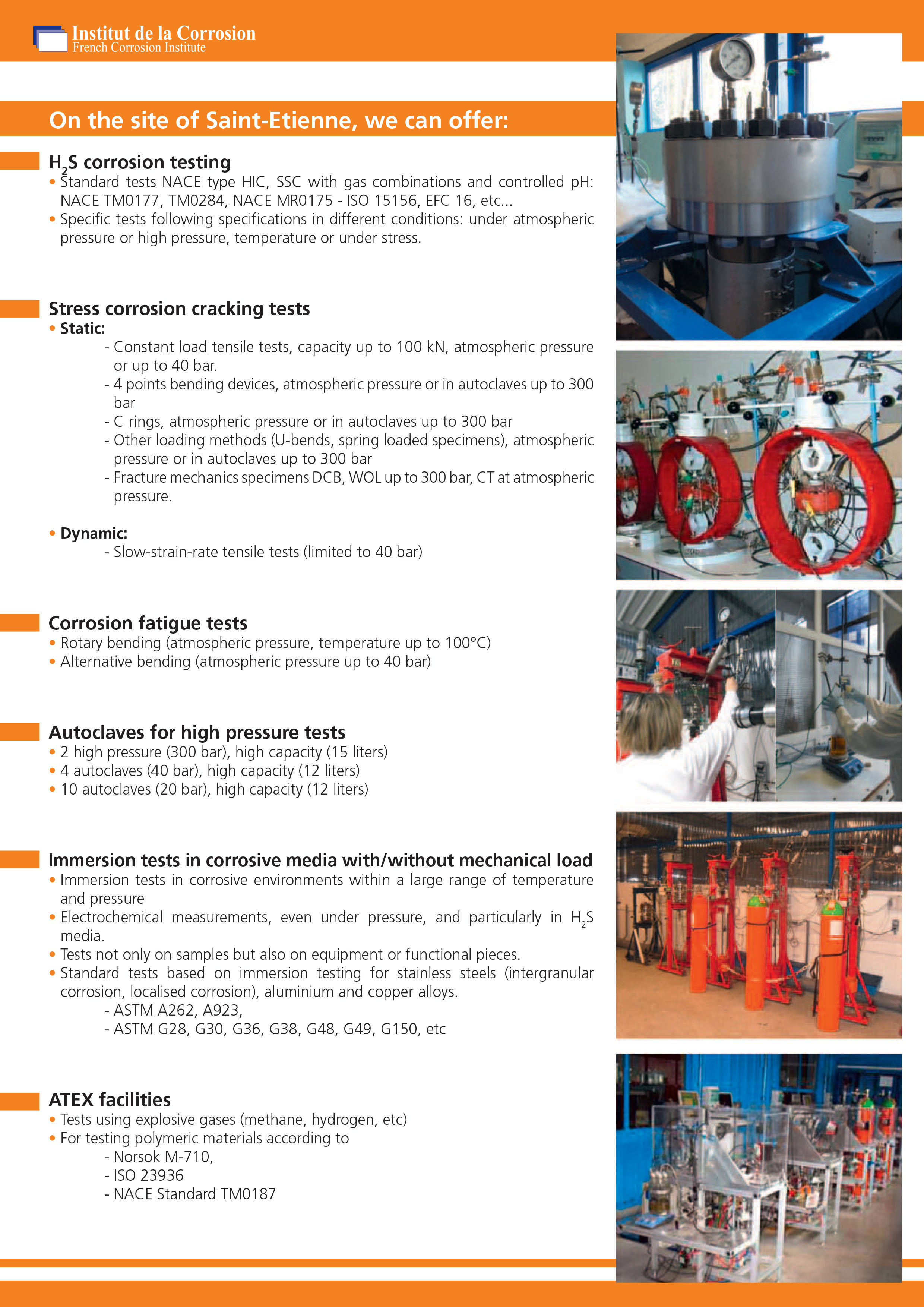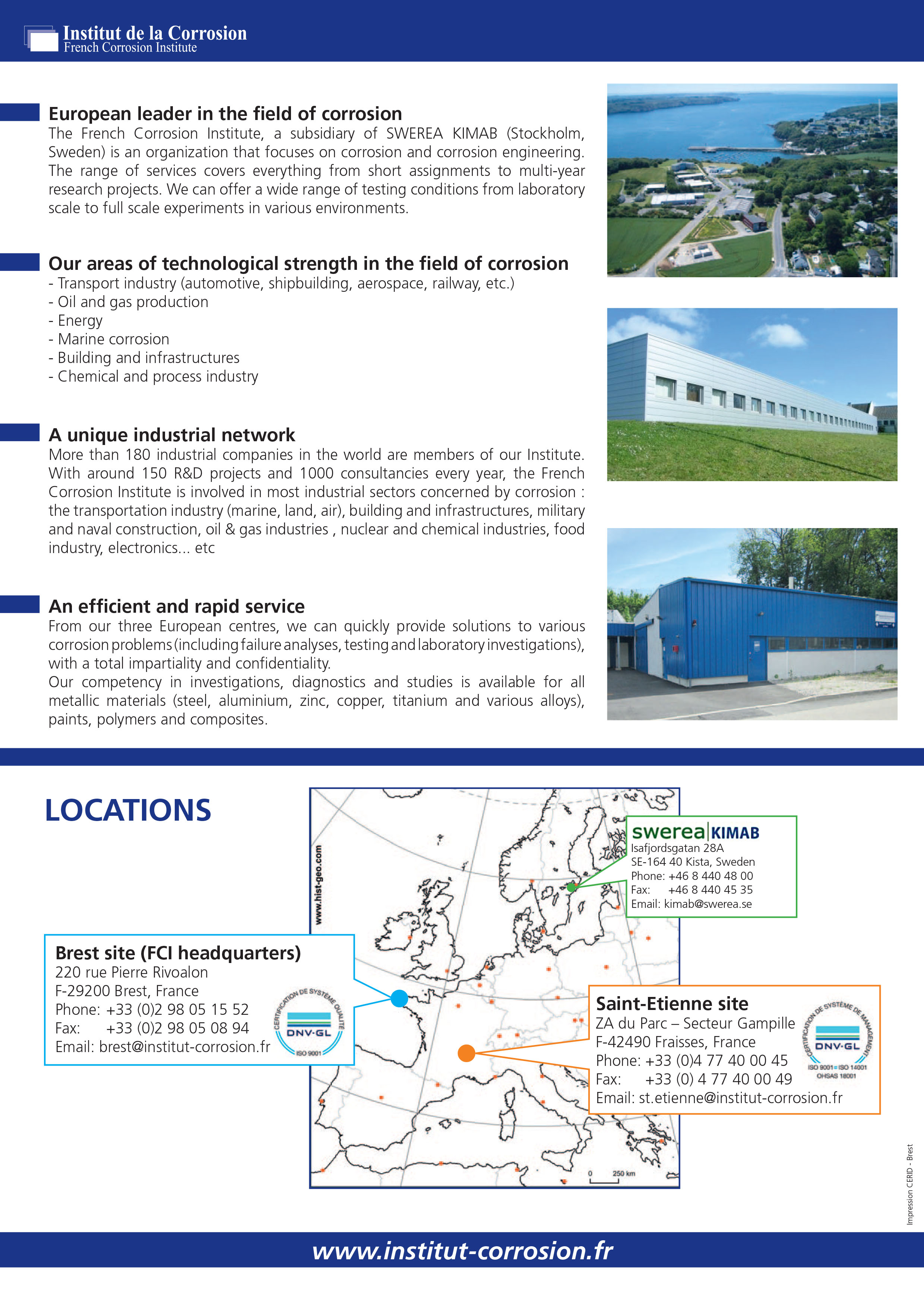General principle of design
Cathodic protection of internal surfaces is achieved with galvanic anodes or by impressed current. The nature, the location and the number of anodes depends on the chemical composition of the liquid, on its conductivity, on the temperature... In practice, the conductivity of the liquid must be higher than 0,001 S.m -1.
The electrical resistivity of the internal coatings of surfaces is relatively high if we use, for example, enamel or epoxy resin. However if such coatings are degraded, their resistivity decreases. The electrical resistivity of coatings containing cement is relatively low.
When the resistivity of the coating is high, the current density taken into account during the design is about 5 mA.m-2. It is about 1 A.m-2 for non-covered surfaces.
When the conductivity of the liquid is low (high resistivity), and that the structure to be protected contains uncoated metallic elements, these must be isolated from the whole structure. The location of the anodes needs to be studied carefully.
Secondary reactions
In the case of an internal protection, the electrochemical reactions on the anode and cathode (surface to be protected) can modify the composition of the liquid which is in a confined volume. This is to be taken into account for sanitary or industrial reasons. Gaseous emissions can also occur, in particular hydrogen, when the potential of the structure is too negative. This is why vent cocks and inspection hatches are sometimes required, as well as potential measurements. Chart 3 points out some requirements.


